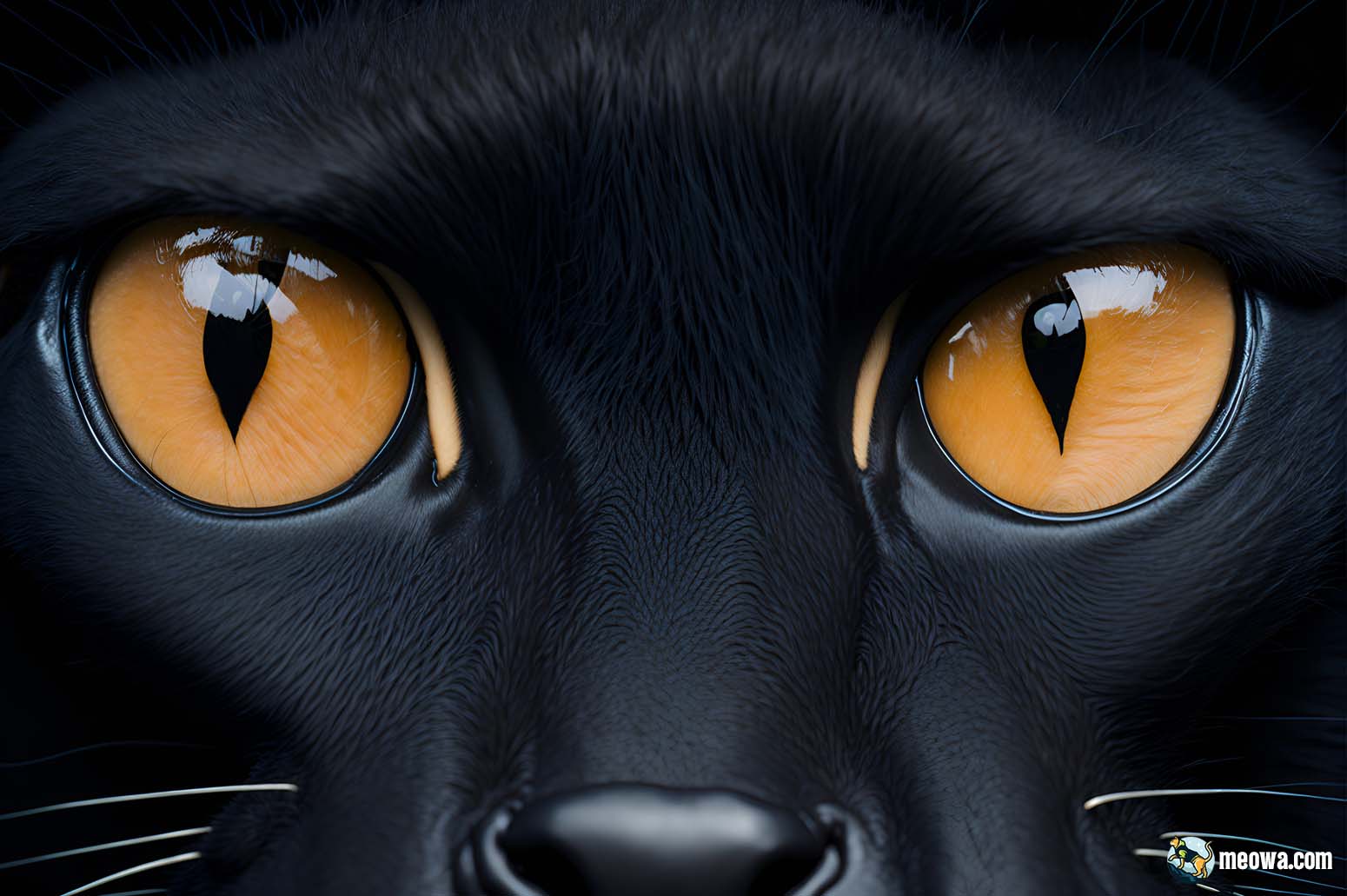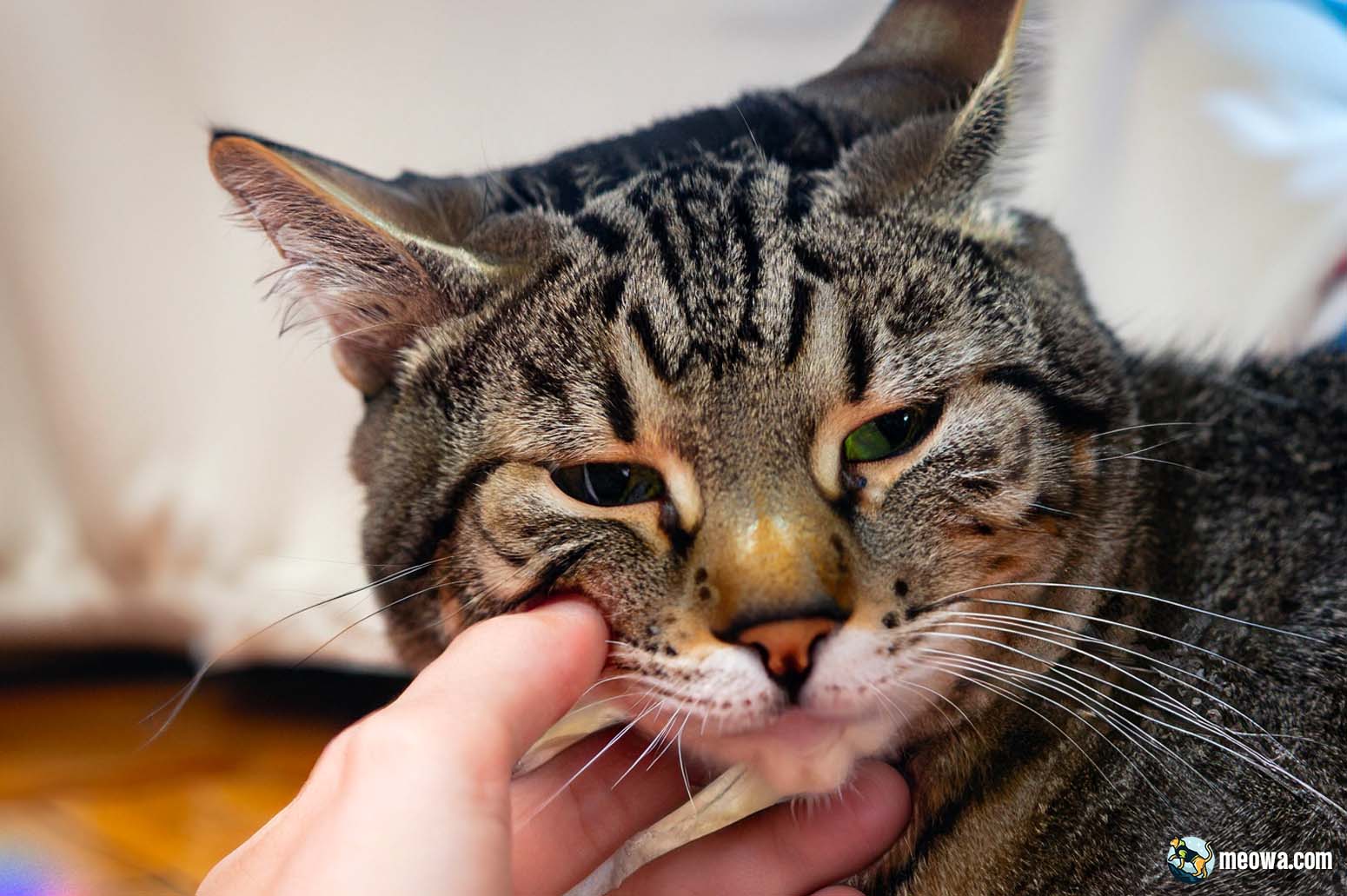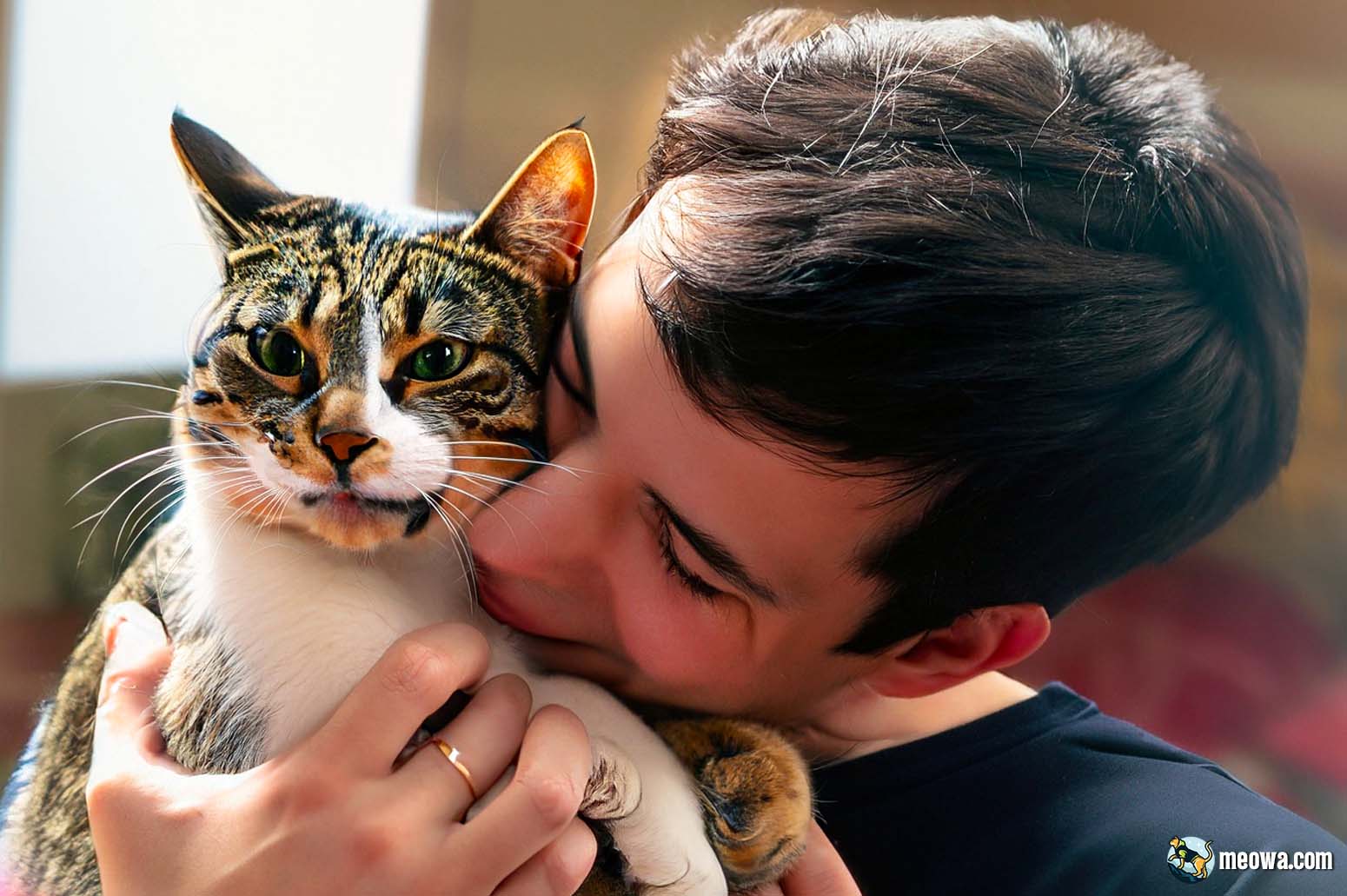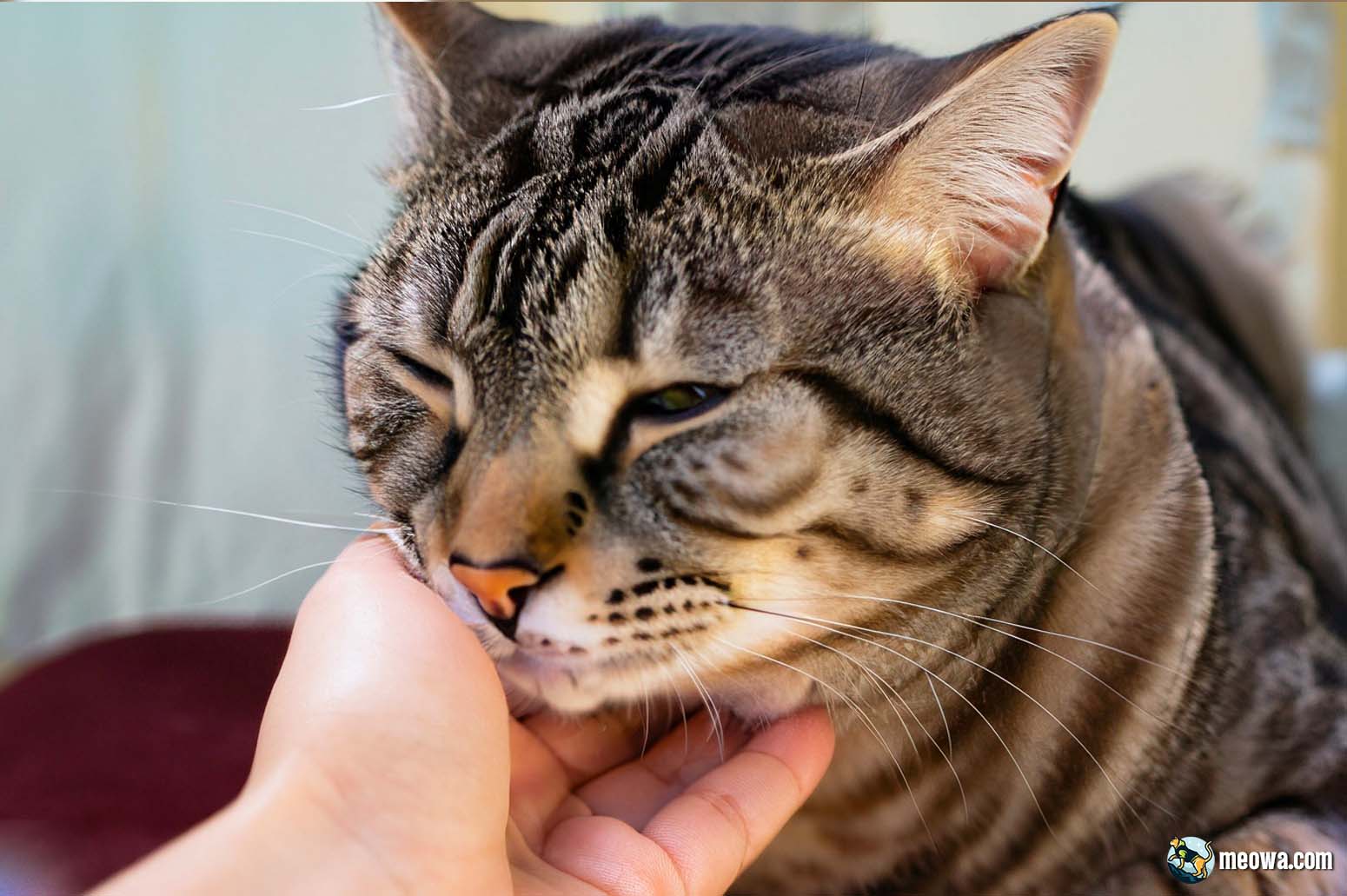How to Show Your Cat You Love Them: Mastering the Language of Love
Has your feline friend ever looked at you with those big round eyes, and you wondered if it understood how much you loved it? Well, you’ve just stumbled upon a treasure trove of cat-love wisdom! In this article, we’ll embark on an amusing journey, packed with nuggets of knowledge, playful anecdotes, and the secret code to unlocking your cat’s heart. So sit tight, cat-enthusiasts, because we’re about to decode the language of feline affection!
How to Show Your Cat You Love Them?
The secret to showing your cat love is through understanding and respect. Use a blend of verbal cues, gentle touches, playful interaction, nutritious food, and a comfortable environment to communicate your affection. Remember, every cat is unique, and tailoring your actions to its preferences goes a long way!
Want more details? Stick around! This article is bursting with deep dives into each method, hilarious cat tales, and pro-tips to maximize the love you share with your furball!
Understanding Your Furry Friend

If you’ve ever been accused of treating your cat like your child, don’t worry, you’re not alone. We humans have a tendency to anthropomorphize our pets, attributing human-like thoughts and feelings to them. While this is a natural way for us to relate to our pets, it can lead to misconceptions, especially when it comes to cats.
Decoding Cat Behavior: The Basics
Ever seen your cat doing the cha-cha on your newly upholstered couch and wondered, “What in the world…?” Trust me, we’ve all been there. Cats can be mysterious creatures with their peculiar behaviors, but there’s always a reason behind their actions, and often, it’s their way of communicating with us.
For instance, when your cat “kneads” your lap with their paws, it’s not because they’ve been watching too many baking shows on Catflix (yeah, that’s a thing). Kneading is a behavior kittens display while nursing, and when they do it in their adulthood, it’s often a sign of contentment.
Similarly, if your cat is showing you their belly, it doesn’t necessarily mean they’re inviting you for a belly rub (like dogs often do). In the cat world, exposing the belly is a sign of trust and comfort. However, it’s generally best to admire this gesture from a distance, as touching the belly might get you a quick swipe from your feline friend.
Cats are Not Small Dogs: Debunking the Myth
Now, I can hear you saying, “But my dog loves belly rubs!”. And that’s where we need to take a moment to debunk a common myth: cats are not small dogs. They have their unique ways of expressing their likes, dislikes, and love.
Unlike dogs, cats are solitary hunters and are naturally more independent. This doesn’t mean they don’t crave affection or companionship; they just show it differently. For example, while a dog may show love by wagging its tail and jumping around, a cat may demonstrate affection by slow blinking or rubbing against your legs.
| Behavior | Cat | Dog |
|---|---|---|
| Approach to Social Interaction | More Independent, May Seek Affection On Their Own Terms | Often More Sociable, Frequently Seeks Owner’s Attention |
| Tail Wagging | Sign of Agitation or Annoyance | Sign of Excitement or Happiness |
| Showing Belly | A Sign of Trust, But Doesn’t Necessarily Mean They Want a Belly Rub | Often a Sign They Want a Belly Rub |
| Slow Blinking | Sign of Affection and Trust | Doesn’t Usually Exhibit This Behavior |
| Jumping Around | May Happen During Play, But Less Common | Often a Sign of Excitement |
| Rubbing Against Legs | Sign of Affection, Also Marks You With Their Scent | Less Common, May Do Similar Actions for Attention |
| Solitary vs. Group Hunters | Solitary Hunters, Stalk and Pounce on Prey | Pack Hunters, Use Coordinated Efforts to Chase Down Prey |
Understanding these differences is key to building a strong and loving relationship with your cat. Just like humans, each cat is an individual with its own quirks, preferences, and ways of showing love. So, the next time you’re confused by your cat’s behavior, take a moment, slow blink, and remember: you’re learning a new language – cat language!
In the following sections, we’ll delve deeper into the complex world of feline communication and explore how you can tell your cat you love them in a way they understand and appreciate.
The Art of Cat Communication: Do Cats Know You Love Them?
You may not have realized it, but you’ve been enrolled in “Cat Communication 101”. As an attentive cat parent, it’s your job to decipher the complex feline vocabulary filled with purrs, chirps, rubs, and those “I-know-I-look-cute” slow blinks. But you may be wondering, do cats understand when we express our love? The answer is a resounding ‘Yes’! But only if we speak their language.
Speaking Their Language: Sounds to Tell Your Cat You Love Them
Now, I’m not suggesting you start meowing at your cat (although who am I to judge if you do). The idea is to observe, listen, and respond to your cat’s sounds in a meaningful way. One of the most common ways cats express comfort and affection is by purring. A relaxed, rhythmic purr often means your feline friend is content. Purring back at them might seem odd, but it’s a way of saying, “I get you, buddy. I’m happy too.”
Then there are the chirps and trills — no, your cat is not trying to take up bird-watching. These sounds are typically how a mother cat communicates with her kittens. So, when your cat uses them with you, it’s their way of addressing you as family. How adorable is that?
Drawing upon findings from the study ‘Emotion Recognition in Cats,’ it’s clear that our feline friends have developed intricate skills to interpret our emotional signals. This ability, honed through domestication, is vividly displayed in the multifaceted nature of purring which can communicate contentment, hunger, stress, or pain. Hence, understanding this complex cat language allows us to express our love more effectively.
The Cat Kiss: How to Tell Your Cat You Love Them in Cat Language
Now that you’ve started to understand your cat’s sounds, let’s move on to the famous ‘cat kiss’. No, it doesn’t involve any smooching — sorry to disappoint. A cat kiss is actually a slow, deliberate blink. It’s like the feline version of a wink and a smile. It’s a sign of trust and affection, and returning this gesture can be a powerful way to communicate your love.
So, the next time your cat is gazing at you from across the room, channel your inner romantic, and give them a slow, affectionate blink. The ‘cat kiss’ is the perfect way to say, “I love you too, furball,” without uttering a word.
Respect their boundaries. If they seem disinterested or look away, it’s okay. Like us humans, cats have their moods too, and your cat might just be having a “not today, human” moment.
That’s it for this part of “Cat Communication 101”. Stay tuned to learn more about bonding rituals and activities you can share with your feline friend.
Show Your Cat You Love Them Through Actions

Folks, love is a verb, and that’s doubly true when it comes to showing your cat you love them. Actions, as they say, speak louder than words, especially when the one you’re communicating with has a vocabulary composed of ‘meows’ and ‘purrs’. So, let’s delve into how you can express your undying affection for your cat through your actions.
Create a Safe and Comfortable Environment: The Power of Purring and Meowing
A cat in a cozy environment is a happy cat. In fact, studies suggest that an environment where a cat feels secure can boost their health and wellbeing. So, ensure your home is a feline paradise with warm sleeping spots, scratching posts, and safe hideaways. Consider providing a perch by a window so your cat can watch the world go by (or judge the birds, whichever they prefer).
And remember our previous chat about sounds? Here’s where they come into play again. Purring and soft-spoken words can create a calming environment for your feline friend. And don’t forget the power of your own voice — a soft, soothing tone can comfort your cat and show them you mean no harm.
Quality Time: More Than Just a Pat on the Head
Ever heard the saying, “time spent with cats is never wasted”? The ‘cat-obsessed’ Sigmund Freud coined this phrase, and boy, was he onto something. Spending quality time with your feline friend is an excellent way to demonstrate your affection. But remember, it’s not just about stroking their head while binge-watching the latest hit show on Netflix.
Quality time can be sharing a quiet moment in the morning, talking to your cat (yes, talking!), or just being present with them. A study found that cats are more attached to their owners than we previously believed. They value our company, so make a point to be present and engaged when spending time with them.
Play Time is Love Time: How to Make Your Cat Love You Instantly
If you thought playtime was just for kittens, think again. Cats of all ages love a good play session. It’s a chance for them to unleash their inner hunters, get a workout, and bond with you. It’s also a fantastic stress-reliever for cats, keeping them physically fit and mentally stimulated.
Interactive cat toys like feathers on strings, laser pointers, or crinkly balls can keep your cat entertained. Always end the play session by letting your cat ‘catch’ their prey to satisfy their hunting instincts. Playtime is also the perfect opportunity to introduce novel objects or experiences at their pace. Gradual changes are a cat-friendly approach that helps lessen any stress.
The Right Touch: Petting, Grooming and the Power of a Good Massage
Physical touch is a powerful communication tool in the cat world, and your cat will often show affection by rubbing against you or even grooming you. When it comes to petting your cat, pay attention to their preferred spots. A gentle massage around the cheeks, chin, or base of the tail can be very soothing for your cat. And if your cat loves grooming (most do!), then you’re in luck! Brushing your cat not only keeps their fur smooth and mat-free but also serves as a bonding session.
| Actions | What It Means to Your Cat | Possible Cat Responses |
|---|---|---|
| Slow Blinking | Trust, Affection | Blinking back, Purring |
| Head Bumping | Friendship, Affection | Bumping back, Rubbing against you |
| Soft Talking | Comfort, Safety | Purring, Nuzzling |
| Gentle Petting | Love, Affection | Purring, Kneading |
| Play Time | Engagement, Trust | Active participation, Purring |
One thing to keep in mind is that cats can be sensitive to touch. Be attentive to signs that your cat might have had enough. They usually don’t hold back when communicating this!
And there you have it, folks! Love, like Rome, isn’t built in a day. It takes patience, understanding, and a willingness to learn and adapt. Your cat is worth every effort. Stay tuned to know how to take these lessons even further to create a stronger bond with your beloved feline.
Food is Love: How to Make a Cat Like You

Do you remember the last time you felt loved and cared for when someone prepared a meal just for you? Your cat experiences a similar feeling.
Nutritious Meals: A Token of Your Affection
Feeding your cat isn’t a mundane task; it’s a daily opportunity to express your love. Like humans, cats thrive on a diet that is rich in essential nutrients, vitamins, and minerals. Providing a balanced and nutritious diet shows your cat you care about their health and well-being.
So, how do you provide a diet that’s fit for a king (or queen)? Start by understanding the unique dietary needs of cats. Being obligate carnivores, they require a higher amount of protein compared to dogs. Fresh, wet, or specially-formulated dry cat food that lists a source of animal protein as the first ingredient is often a good choice.
But, food isn’t just about nutrition. It’s about the ritual of mealtime too. Just like some humans enjoy breakfast in bed, cats love being served. Serve meals at regular intervals to create a routine. Your cat will learn to anticipate meal times, associating you with the positive experience of being fed.
Treats: The Occasional Luxury That Shows Your Cat You Love Them
We all enjoy a special treat now and then, and cats are no different.
When used judiciously, treats are an excellent way to bond with your cat and show them you love them. It’s the feline equivalent of getting a surprise bouquet of flowers or your favorite candy!
However, the keyword here is “judiciously.” Treats should not make up more than 10% of your cat’s daily caloric intake. Over-reliance on treats could lead to weight gain and nutrition imbalance. Choose high-quality cat treats that are tasty but also contribute positively to your cat’s health.
Also, consider using treats as a training tool. Cats can be trained (surprise!), and using treats as a reward can reinforce positive behaviors. Whether it’s learning to use a new scratching post or executing a paw-shake, rewarding your cat with a treat can strengthen your bond.
Respect Their Independence: Does My Cat Know I Love Her?

Independence, it’s not just for teenagers and nations. Your cat values it too. But does that mean they don’t know you love them? Let’s find out.
The Need for Alone Time: Understanding Your Cat’s Personal Space
Just like the uncle at family gatherings who retreats to a quiet corner with a book, cats crave their alone time. This isn’t them being aloof or antisocial; it’s just them channeling their inner wildcat. Cats were solitary hunters before they decided to tolerate us humans, and their desire for solitude is a remnant of those times.
If you’ve noticed your cat enjoying a peaceful perch by the window or discovering hidden nooks under the bed, you’ve observed their love for personal space. Granting them these peaceful sanctuaries is like gifting them a mini vacation, a sign you love and respect their needs.
If your cat seems more Grumpy Cat than Puss in Boots, don’t be disheartened. Ears folded backward, a twitching tail, dilated pupils, or a low growl are all cat-ese for “I need some me-time”. Don’t sweat it, it’s not you, it’s them.
Let Them Come to You: The Power of Patience
Cats are a bit like your favorite dessert – you might want to dive right in, but the anticipation makes it so much sweeter. They’re masters of their own will and they appreciate the same respect. Letting them initiate contact is a great way to show your love. It’s like giving them the remote control – a true act of love.
Patience can be a challenge, especially when you’re dealing with a furball of cuteness. But let them come to you when they want affection. This will help build trust faster than a catnip can empty a room of mice. This respect for their autonomy can strengthen your bond, making cuddle times more enjoyable.
So the next time you’re lounging on your couch and your cat decides to leap up and join you, it’s more than just seeking warmth. It’s a clear sign that your cat knows you love them, and they’re reciprocating that love – in their own unique, independent way. Consider it a feline high-five for your efforts!
Health is Wealth: Showing Your Cat Love Through Care

“If having a soul means being able to feel love and loyalty and gratitude, then animals are better off than a lot of humans.”
– James Herriot
Our feline friends may not read James Herriot, but they sure would appreciate his sentiment. They might not understand the concept of healthcare, but they do understand the comfort of a pain-free, playful life. That’s where we come in.
Regular Vet Visits: An Expression of Love
Visiting the vet isn’t a stroll in the park, and not just because dogs are usually there. The unfamiliar smells, sounds, and that pesky thermometer can all be stressful for your cat. But, it’s a necessary evil – like going to the dentist or doing your taxes.
Just like you wouldn’t skip a child’s check-up, you shouldn’t skip your cat’s. Regular vet visits are crucial for early detection and treatment of potential health issues. And remember, cats are experts at hiding pain, just like some of us are at hiding our secret chocolate stash. Routine check-ups can catch issues your cat has been silently dealing with.
By keeping them healthy, you’re giving them the best ‘I love you’ gift ever – a long, happy life with you. Plus, there are always treats after a vet visit, and what says love better than treats?
Keep Them Fit: Exercise and Its Benefits
Cats may not be joining you for a run or queuing up workout videos, but that doesn’t mean they don’t need exercise. Indoor cats especially can lead a sedentary lifestyle, turning them into couch potatoes. And while a potato-cat sounds adorable, it’s not the healthiest.
Interactive play sessions, puzzle feeders, climbing trees, or even a laser pointer marathon can help your cat stay in top shape. Keeping them fit doesn’t just control their weight; it also stimulates their mind, reduces anxiety, and strengthens your bond. Plus, it can help them sleep better, reducing the chance of their signature 3 am “The aliens are coming” race around the house.
Keeping your cat healthy is like giving them a fur-ever valentine card. It’s a timeless expression of your love and care for them.
Purr-fect Love: How Do I Know If My Cat Loves Me?

When it comes to deciphering the feline enigma, the question is: “How do I know if my cat loves me?” Whether your cat sleeps next to you, purrs at your touch, or gives you a headbutt, these are all signals that your feline friend holds you in high regard. Let’s dive into these signs and more, as we explore the universal language of love, cat style!
Signs Your Cat Loves You: Cat-tastic Anecdotes and Real Life Experiences
Cats have their unique ways of showing affection that might sometimes come across as quirky or even mystifying. But remember, each ‘meow,’ ‘purr,’ or ‘rub’ is their version of saying “I love you.”
For instance, a cat showing its belly doesn’t necessarily mean it wants a belly rub (unlike dogs). Instead, it is a sign of trust and affection, as the belly is a vulnerable area for cats. So, next time your feline companion rolls over and exposes their belly, consider it their unique way of expressing love and trust.
Another clear sign of affection we already mentioned is the famous ‘slow blink.’ In the feline world, closing one’s eyes in the presence of another is a sign of trust. A cat blinking slowly at you is like a human wink—it’s their subtle way of expressing affection and trust.
Does your cat follow you around? Congratulations, you have a furry fan! Cats are known to follow their favorite humans around the house. This act signifies that your cat sees you as part of their family and enjoys your company.
Fur-tual Q&A: Does My Cat Understand My Kisses and Other Questions from Our Readers
Addressing some of the most commonly asked questions about cat behavior is an excellent way to unravel the mystery surrounding feline love. Let’s get to answering some of your pressing questions!
Does my cat understand my kisses?
While cats might not understand human kisses in the way we do, they do recognize it as a gesture of affection. Cats use scent, touch, and body language to communicate their feelings, so your kisses might not translate directly. However, by associating your kisses with positive experiences (like petting or feeding), they learn to understand it as a form of love and attention.
Why does my cat headbutt me?
This action, known as ‘bunting,’ is another sign of feline affection. Cats have scent glands on their heads that they use to mark their territory. So when your cat rubs its head against you, it’s their way of saying you’re part of their territory, their family.
Why does my cat bring me ‘gifts’?
Bringing ‘gifts’ (like a dead mouse or bird) may not be the kind of love token you appreciate, but for your cat, it’s a significant gesture. It signifies that your cat trusts you and wants to share its ‘prize’ with you.
By recognizing and appreciating these signs of feline affection, we can better understand and reciprocate their love, thus strengthening our bond with our furry companions. After all, every purr, headbutt, and ‘gift’ is a purr-fect expression of their affection for you!
Conclusion: Every Cat is Unique, So Is Your Bond
As our exploration into the world of feline love draws to a close, it’s important to remember one cardinal rule: no two cats are alike. Just like people, every cat comes with its personality, preferences, and peculiarities. Understanding this is the key to unlocking a meaningful relationship with your cat.
Embracing Differences: Tailoring Your Love Language to Your Cat’s Personality
Your cat might be the life of the party, craving attention and playtime, or a quiet contemplator, enjoying serene moments alone on the windowsill. Some cats might indulge in a belly rub now and then, while others strictly prefer head scratches. Understanding your cat’s unique preferences is essential in communicating your love effectively.
It’s a bit like learning a new language. It might take time and patience, but the rewards are well worth the effort. From ‘speaking cat’ to decoding their behaviors, every step you take to comprehend your cat’s unique ‘meow-nologue’ is a step towards deepening your bond.
Love is a Journey: Evolving with Your Cat’s Life Stages
As your cat ages, their needs and behaviors might change. Kittens are playful and energetic, adult cats may enjoy a good balance of play and rest, and senior cats often require more rest and special care.
Being sensitive to these changes and adapting your interactions accordingly is crucial. Whether it means switching to more gentle games for an aging cat or providing special diets for kittens or seniors, these acts of care show your feline friend that your love for them is as dynamic and evolving as they are.
In the end, understanding how to show your cat you love them comes down to respect, understanding, and patience. It’s about more than just feeding them or playing with them—it’s about being there for them, through every stage of their lives, cherishing the joy, companionship, and unconditional love they bring into ours.
Thank you for joining us on this enlightening journey. We hope this guide will help you show your feline friend just how much they mean to you. For more exciting insights into the world of cats, continue exploring our blog. Don’t forget, every ‘meow’ matters, and every cat deserves a loving, caring home.

